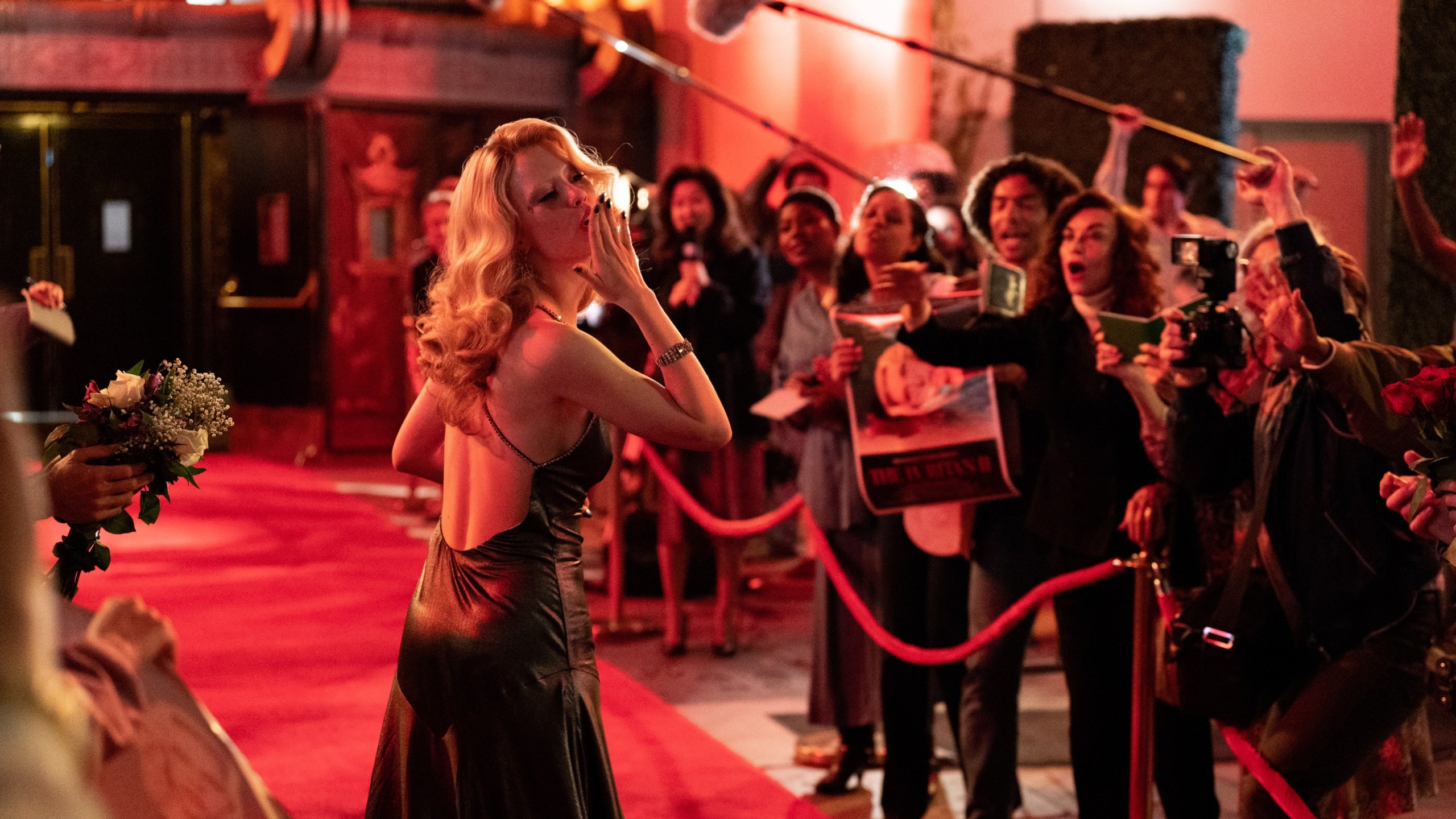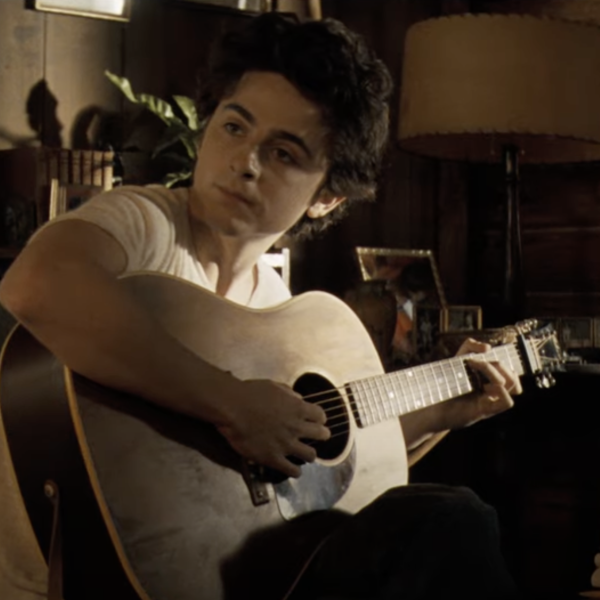“MaXXXine,” the third film in writer/director Ti West and producer/actress Mia Goth’s “X” trilogy, is now in theaters. From the ’70s set “X” to the 1910s of “Pearl” and now the ’80s of “MaXXXine,” one of the defining characteristics of the trilogy is how they adopt the look and filmmaking style of the genre of the films they are emulating. Cinematographer Eliot Rocket, a long-time West collaborator who shot all three films, told IndieWire the roots of this approach pre-dated 2022’s “X.”
“This started back with ‘House of the Devil,’” said Rocket, referencing the 2009 horror film he shot for West. “We were trying to make a movie that felt not just like a period, but the whole thing felt more like an artifact from that time.”
With “X,” West wanted to make his first slasher film in the spirit of 1970s films like “Texas Chainsaw Massacre,” in part because West thought modern horror movies had gone soft. In emulating the ’70s slashers, they adapted the camera movement, production and costume design, cinematography and film language of those films. Rocket had to conscientiously avoid current cinematography trends and embrace how the look of the three filmmaking eras was dictated by what was possible with the technology those filmmakers had at hand.

“On ‘X,’ I endeavored to pretty much do those movies with lighting fixtures that would have been available in that era,” said Rocket. “I cheated a little bit, I used a few LED tubes here and there on closeups, but predominantly, it was all these old fixtures that we got from the rental house. It was back of the shelves, super dusty things.”
‘Pearl’
Collaborating on “X” was such a good experience that Goth and West ended up writing a prequel origin story for one of her characters (“Pearl”). “X” was shot on a sound stage in New Zealand during the height of COVID, and there was a short window after “X” wrapped in which things aligned for the team to roll right over into preproduction on “Pearl.” Set in 1918, the cinematic reference for “Pearl” evolved considerably during this time.
“Ti and I had originally conceived of it as being in black and white, we were going for this German Expressionist kind of thing, like a ‘Nosferatu,’ ‘Metropolis’ vibe,” said Rocket.
The distributor A24 wasn’t in love with the idea. With three black-and-white movies (Robert Eggers’ “The Lighthouse,” Joel Coen’s “The Tragedy of Macbeth,” and Sam Levinson’s “Malcolm & Marie”), West agreed he didn’t want to be A24’s fourth and pivoted 180 degrees to a Technicolor look. This wasn’t strictly period accurate but brought an appropriate old-school Hollywood studio look to the film.

While Technicolor movies like “Wizard of Oz” and “Mary Poppins” were discussed and referenced in the film itself, “Pearl” would not be in conversation with specific films, as “X” was “Chainsaw.” The production team had four weeks to convert the house from “X” to the 1918 version for “Pearl.” It wasn’t just period detail; the three-strip Technicolor look needed to be baked into the film’s color palette. Rocket described working with production designer Tom Hammock and costume designer Malgosia Turzanska on things like agonizing on 30 different shades of red and figuring out what saturation would photograph just right.
“I have to give Ti tons of credit because that is the kind of thing he’s very focused on, he’ll push really hard to make sure that the aesthetic, the colors, the clothes people are wearing, what the hairstyles are, what the props are, what the color of the wall is painted,” said Rocket. “It’s really just a matter of someone who’s in charge, plus all of the other people who are working on it creatively having the vision in their mind to create a consistent and cohesive aesthetic in terms of all of these things that are going to be in front of the camera.”
Rocket said he gets too much credit for the art department’s work in creating the Technicolor look in “Pearl,” but it did require close collaboration across departments to make sure it looks right on camera, and lighting is a big part of that.
“We used a lot of high key lighting that was more reminiscent of those kind of Technicolor films like ‘Wizard of Oz’ worlds,” said Rocket of how he lit “Pearl.” This meant not settling for scenes normally shot with natural light. Rocket cites a scene where Pearl reaches into an alligator’s nest and takes the egg out as an example. “I initially set the shot up with just natural light, and it was kind of dead-looking. Then I [thought], ‘Oh, we should put a big front light on her like they would in the 1950s, and we just rolled in this big light and suddenly the scene makes sense.’”
On “Pearl,” the cinematographer broke from the rules he established for shooting “X” of using period-accurate lighting equipment.
“It was a real uphill battle in some ways because some of it was really funky,” said Rocket of shooting “X” with older equipment. “And I was like, ‘No more. I’m not going to deal with that again.’ On ‘Pearl’ I just [used] modern fixtures, a lot of LED [lights], everything was remote operated off the board.”
‘MaXXXine’

For “MaXXXine,” set in 1985, Rocket found a compromise between his “X” and “Pearl” approaches to lighting equipment, in large part because of a new collaborator: gaffer Ross Dunkerley, with whom the cinematographer worked on Season 2 of the HBO’s “Perry Mason.” Dunkerley comes to “MaXXXine” with a long and rich history working in the lighting department over the last four decades.
“Ross is old school, and he really understands the way things classically have been lit,” said Rocket. “So even though we didn’t limit ourselves to fixtures that would have been available in the ’80s, inevitably we used old tungsten fresnels lights, and a bunch of things that were available back then, with a healthy mixture of totally modern, brand new elements.”
On all the films, Rocket and West fully embraced the look of the photochemical optical process employed by the films they were emulating, but they didn’t do so by shooting on celluloid. One thing that stayed consistent throughout the trilogy was the digital capture; all three films were shot on a Sony Venice camera and relied primarily on Vantage MiniHawk prime lenses (although one prominent exception is the use of period-accurate Canon K35 zoom lenses for the film-inside-the-film being shot in “X”). This meant collaboration with a colorist and working with LUTs was key to creating the various looks.
On “MaXXXine,” Rocket collaborated with colorist Tom Poole to develop a LUT before production that captured the dynamic range of color, grain structure, de-focused images (compared to the digital sharpness of the Venice), and halation (when light bounces through the film stock and exposes other parts of the emulsion, causing bright areas of the frame to soften and bloom) that would be common for a movie shot on 35mm in 1985.
“You really need a LUT in-camera, so that you can make the decisions there on the day,” said Eliot. “There’s an enormous amount you could do obviously in post, but to have it look 80 to 90 percent of the way it’s gonna look when you’re on set is ideal in my mind.”
Placing a finger on the filmic inspirations of “MaXXXine,” which still has some of the same horror roots of “X” which only takes place six years prior (1979), is a little less direct compared to the first two films in the trilogy.
“In my mind, it’s more of a thriller than ‘X.’ I keep going back to Brian De Palma’s films like ‘Body Double’ and ‘Dressed to Kill.’ I read the script, and that was the first thing that came to my mind when I first talked to Ti,” said Rocket, who confirmed this was part of West’s thinking as well, the director specifically citing “Hardcore” and “Angel” as two non-De Palma influences from the genre. “But the other thing we were going to incorporate [was] the aesthetic of the Italian Giallo. In my mind, ‘MaXXXine’ is really a mashup of those two aesthetics.”
Both the Giallo and ’80s thrillers utilize color in the lighting. Giallo in a more arch way, while the 80s thrillers often juxtaposed color and darkness. Rocket points to the neon pizza shop sign that spills red light into the alleyway and Maxine’s apartment as one of his favorite examples. That was a case of something being pre-planned during preproduction, but there were also scenes where the approach served as creative solution on set. One example is the shot when Maxine opens her apartment door, the elevator doors have just closed, to discover a mysterious package that’s been left.

“There’s a shot looking from the elevator end of the hallway back at her. It’s a very plain shot, but there’s like a kind of flashing yellow light that comes through the window at the end of the hallway,” said Rocket. “That was the thing that just happened on set, we needed something that kind of gives us a little bit more life, ‘Oh, let’s do this as if there’s a commercial sign outside this window.’”
The biggest trick shooting in Los Angeles was nighttime exteriors, specifically the key scenes shot on Hollywood Boulevard, where Rocket would have to eliminate light (especially modern ones) to achieve the darkness and image quality he desired. It’s here that shooting on a digital camera at 3200 ASA (Rocket likes how Venice looks with the light sensitivity of the sensor raised) peering into the night can be tricky.
“We had a couple of blocks of Hollywood Boulevard that were basically blocked off for us for a few days, and we had a certain amount of control over some of the fixtures on the street, and I did my best to get a lot of things turned off,” said Rocket.
In many ways, what Rocket accomplished in terms of adapting the period genre filmmaking in “MaXXXine” is his most impressive work. While “MaXXXine” did have more money and resources than “X” and “Pearl,” shooting on location was far less easy to control from a lighting perspective, and yet the results are just as transportive. The film looks like a great 1985 Los Angeles horror-thriller.






